Achilles Tendon Rupture (Part Three)
What are the treatment options?
There are two options for treatment. One option is surgical operation to repair the ruptured tendon. The surgeon stitches (sutures) together the torn edges of the Achilles tendon, and may also use another tendon or take a tendon graft to aid the repair. Placing in a cast (plaster cast) or brace is necessary after the operation.
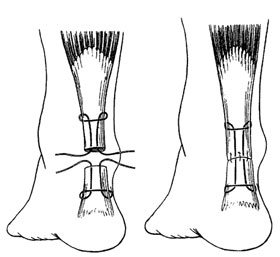 |
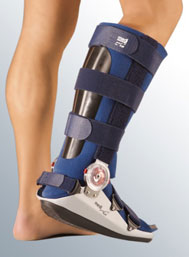 |
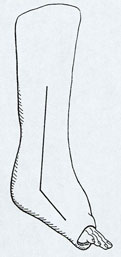 |
| Surgery | Brace (Walking Boot) | Placing in a cast |
The other possibility is to allow time for the tendon to heal naturally, by resting in a cast (plaster cast) or brace. This is called conservative treatment. If the tendon does not heal by itself, surgical repair may then be done later.
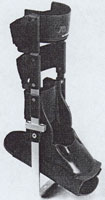
Both options will include placing in a cast (plaster cast) or brace (orthosis) for about eight weeks, to protect the tendon as it heals. The cast or brace is positioned in a way that the foot is in plantar flexion down so that the foot experiences as little tension as possible.
Traditionally, crutches have been used to avoid putting weight on the injured foot during the first weeks of treatment. Now there is a trend towards early mobilization. This includes proper fitting in a cast (plaster cast) or brace (orthosis) with which you can walk on. This is more convenient, because you do not need to use crutches.
Which treatment is best?
There is a debate on which treatment is best: surgery or conservative treatment. This section summarizes research on the treatment of Achilles tendon rupture.
Most of the current research has found that surgery has one advantage: it reduces the risk that the Achilles tendon will rupture again later (a problem known as re-rupture). The downsides of surgery are the risk of complications such as wound infection (see below), and the need for such an operation.
For this reason, surgery may be recommended for young people or those who play sports. Conservative treatment may be suggested for older or less active people, and for those who wish to avoid surgery. However, the choice of treatment depends on individual preferences and circumstances. Surgery may also be recommended if there has been a delay in starting treatment.
However, a new part of research has found that surgery and conservative treatment actually give equally good outcomes when the patient is given early mobilization using a Brace.
If an operation is necessary, it is a type of surgery called percutaneous, which uses smaller cuts than traditional surgery. This seems to reduce the risk of encountering a wound infection.
So there are two types of surgical techniques to repair the Achilles tendon:
- In open surgery, the surgeon makes a single large incision in the back of the foot.
- In percutaneous surgery, the surgeon makes several small cuts instead of one large incision.
After the operation, a brace seems to be better than a cast in the direction of faster recovery-rehabilitation and return to normal activities, a lower rate of complications, and patient preferences.
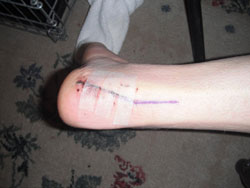
Bravo: A very special explanation which made me understand how to deal with Achilles tendon damage, thank you for the work done with rigor and dedication
Sent by Ervis hasibra, më 27 October 2016 në 10:42